
Porta Linguarum
Scope & Guideline
Advancing linguistic insight for a transformative educational landscape.
Introduction
Aims and Scopes
- Language Teaching Methodologies:
Explores various pedagogical approaches, including Content and Language Integrated Learning (CLIL), English as a Medium of Instruction (EMI), and project-based learning, focusing on their effectiveness in different educational settings. - Teacher Development and Well-Being:
Investigates the professional growth, emotional well-being, and identity of language teachers, emphasizing the importance of teacher support and development programs in enhancing teaching practices. - Language Acquisition and Learning Strategies:
Examines the cognitive and emotional factors that influence language learning, including the use of learning strategies, motivation, and self-regulation among learners. - Cultural and Intercultural Competence:
Addresses the importance of cultural awareness and intercultural communication in language education, focusing on how these elements impact language learning outcomes. - Technology in Language Education:
Analyzes the integration of digital tools and resources in language teaching, including mobile-assisted language learning, online education, and the use of multimedia resources to enhance learning experiences. - Assessment and Evaluation:
Discusses various assessment methods and their implications for language learning and teaching, including formative and summative assessments, and the use of innovative evaluation tools.
Trending and Emerging
- Emotional and Psychological Factors in Language Learning:
An increasing number of studies are exploring the role of emotions, motivation, and psychological well-being in language acquisition, indicating a trend towards understanding the learner's emotional landscape as essential for effective learning. - Digital and Online Learning Environments:
With the rise of technology, there is a growing emphasis on the effectiveness of online and blended learning environments, particularly in response to recent global shifts towards remote education. - Intercultural Communication and Global Citizenship:
Research is increasingly focusing on developing intercultural competence and fostering global citizenship among language learners, highlighting the importance of understanding diverse cultural perspectives. - Innovative Assessment Practices:
There is a trend towards exploring alternative assessment methods that promote learner autonomy and self-regulation, moving away from traditional testing towards more formative assessments that enhance learning processes. - Sociocultural Perspectives on Language Learning:
Emerging research is emphasizing the sociocultural context of language learning, including how identity, community, and social interactions shape educational experiences and outcomes.
Declining or Waning
- Traditional Grammar Instruction:
There appears to be a waning focus on conventional grammar teaching methods, as recent publications favor communicative and integrated approaches that prioritize fluency and contextual language use over rote grammar learning. - Textbook-Centric Approaches:
There has been a noticeable decline in discussions centered around traditional textbooks as primary instructional materials, with a shift towards more dynamic and interactive resources such as digital tools and multimedia content. - Standardized Testing:
Research related to standardized testing practices and their effectiveness in language learning contexts has decreased, possibly due to the growing emphasis on alternative assessment methods that prioritize learner engagement and holistic development. - Linguistic Theory without Practical Application:
Papers focusing solely on theoretical linguistic frameworks without practical implications for teaching and learning seem to be less prevalent, as the journal moves towards research that has clear applications in educational settings. - Focus on Native Speaker Norms:
The emphasis on achieving native-like proficiency is diminishing, with more research highlighting the value of multilingualism and the acceptance of diverse language varieties in educational contexts.
Similar Journals
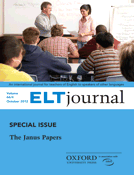
ELT Journal
Exploring Innovations in English Language TeachingELT Journal, published by Oxford University Press, is a premier academic journal dedicated to the fields of Educational Psychology, Linguistics, and Language, boasting an esteemed Q1 category ranking across these disciplines. Since its inception in 1946, the journal has served as a vital platform for researchers and educators, offering insights into English Language Teaching (ELT) and the evolving pedagogical practices that influence language acquisition and literacy development. With an impressive Scopus ranking placing it in the 95th percentile within the Arts and Humanities (Linguistics and Language), ELT Journal not only contributes to academic discourse but also bridges theoretical frameworks with practical applications in educational settings. Although it does not currently offer Open Access, the journal remains essential for professionals and students alike, eager to stay abreast of the latest research trends and innovations in the global ELT landscape. For those committed to advancing their understanding of language education, the journal's diverse range of articles and case studies provide invaluable resources.

Yazyk i Kultura-Language and Culture
Fostering Dialogue Between Linguistics and CultureYazyk i Kultura - Language and Culture is a distinguished academic journal dedicated to the exploration of linguistic and cultural issues across various contexts. Published by TOMSK STATE UNIVERSITY, this journal serves as a vital resource for researchers, scholars, and students interested in the intricate interplay between language and culture. With an ISSN of 1999-6195 and an E-ISSN of 2311-3235, it engages a global community in disseminating high-quality research articles, reviews, and theoretical discussions. Although the journal is not categorized as Open Access, it ensures that its contents contribute significantly to the academic discourse within the fields of linguistics, cultural studies, and social sciences. With a commitment to promoting scholarly research, Yazyk i Kultura is positioned to shape contemporary conversations about language's role in cultural dynamics, making it an essential outlet for those dedicated to advancing understanding in this interdisciplinary domain.

Latin American Journal of Content & Language Integrated-LACLIL
Pioneering Insights in Bilingual EducationThe Latin American Journal of Content & Language Integrated-LACLIL, published by UNIV SABANA, FAC ENFERMARIA, is a pioneering open-access journal that has been serving the academic community since 2008. With an aim to foster the integration of content and language learning, LACLIL is a crucial resource for researchers, educators, and students interested in the intersection of linguistics, education, and bilingualism within the Latin American context. By promoting high-quality scholarly articles, this journal not only enhances understanding and practice in Content and Language Integrated Learning (CLIL) but also contributes to the discourse surrounding effective teaching methodologies. LACLIL encourages contributions that deepen insights into pedagogical strategies and curricular development, making it an essential platform for professionals dedicated to advancing language education in diverse cultural settings.
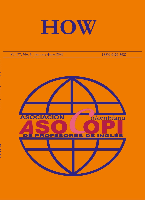
How-A Colombian Journal for Teachers of English
Exploring New Frontiers in English Education.How: A Colombian Journal for Teachers of English is a prestigious, peer-reviewed publication dedicated to advancing the field of English language teaching in Colombia and beyond. Established by the ASOC COLOMBIANA PROFESORES INGLES, this journal has embraced an Open Access model since 2014, ensuring that innovative research and teaching methodologies are accessible to a global audience. With a focus on pedagogical strategies, curriculum development, and language acquisition, How aims to foster community among educators, researchers, and practitioners dedicated to improving English language instruction. The journal's commitment to high-quality scholarship and practical applications makes it an indispensable resource for professionals seeking to enhance their teaching practices. Housed in Bogotá, Colombia, How reflects the dynamic landscape of English education in Latin America, contributing significantly to both regional and international discourse.
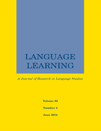
LANGUAGE LEARNING
Advancing the frontiers of language acquisition.LANGUAGE LEARNING is a premier academic journal dedicated to advancing the field of language acquisition and education, published by Wiley. With a foundation dating back to 1948, the journal has carved an esteemed niche in the academic landscape, currently holding a prestigious Q1 rank in both the categories of Education and Linguistics and Language. It proudly occupies the 9th percentile rank in the Arts and Humanities domain and the 10th percentile in Social Sciences, illustrating its influence and reach. The journal publishes high-quality research that explores various dimensions of language learning, from cognitive processes to pedagogical approaches, making it an essential resource for researchers, educators, and students alike. Although Access options are non-open, the journal remains accessible to a wide audience, reinforcing its commitment to disseminating critical insights within the academic community.

TESL Canada Journal
Uniting Scholars and Practitioners for Language Learning SuccessTESL Canada Journal, published by TESL Canada, serves as a vital resource for researchers, educators, and practitioners in the field of English as a Second Language (ESL) and applied linguistics. With its commitment to advancing scholarship and best practices in language education, this esteemed journal fosters a platform for the dissemination of high-quality research and innovative pedagogical approaches. Although it operates without open access, its comprehensive articles and reviews offer valuable insights into current trends and challenges faced by ESL educators across Canada and internationally. The journal is dedicated to promoting a deeper understanding of language acquisition processes and instructional methodologies, contributing significantly to the professional development of its readership. Located in Burnaby, Canada, the journal aims to bridge the gap between theory and practice, making it an indispensable source for educators and researchers looking to enhance their expertise in ESL education.
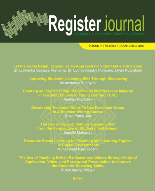
REGISTER Journal
Exploring the rich tapestry of contemporary Islamic thought.Welcome to the REGISTER Journal, an esteemed publication in the field of Islamic studies and education, dedicated to advancing knowledge and fostering critical dialogue since its inception. Published by Univ Islam Negeri Salatiga, the journal operates under an Open Access model, empowering researchers, practitioners, and students worldwide with unrestricted access to its scholarly content since 2008. With the ISSN: 1979-8903 and E-ISSN: 2503-040X, REGISTER Journal aims to disseminate innovative research, insightful reviews, and thought-provoking discussions that contribute to the vibrant tapestry of Islamic scholarship. By fostering a collaborative environment for sharing ideas, REGISTER serves as a crucial platform for educators, researchers, and students seeking to deepen their understanding of contemporary issues within the Islamic context. Join us in exploring the intersections of thought, culture, and education in this engaging and dynamic journal.
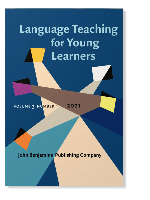
Language Teaching for Young Learners
Fostering linguistic growth in young minds.Language Teaching for Young Learners, published by John Benjamins Publishing Co, is a premier journal dedicated to enhancing the pedagogy of language acquisition in early childhood education. Since its inception in 2019, it has rapidly established itself within the research community, reflected by its high Scopus rankings—placing it in the 85th percentile for Language and Linguistics and the 84th percentile for Education. The journal aims to provide a platform for innovative research, practical insights, and theoretical discussions surrounding the teaching of languages to young learners, thus contributing significantly to the fields of Education and Linguistics. With an open access model currently unavailable, it caters to a diverse global audience, including researchers, educators, and policy-makers, keen on improving pedagogical practices. Located in the Netherlands, the journal's commitment to academic excellence is evident through its Q1 and Q2 rankings in Linguistics and Language and Education respectively, encouraging continual discourse in cultivating effective language education practices.

Journal of Technology and Chinese Language Teaching
Exploring New Frontiers in Language and TechnologyJournal of Technology and Chinese Language Teaching, published by JOURNAL TECHNOLOGY & CHINESE LANGUAGE TEACHING, serves as an influential platform for scholars and practitioners in the intersecting fields of technology, language education, and linguistic research. With an ISSN of 1949-260X, this journal strives to disseminate cutting-edge research and innovative practices aimed at enhancing the teaching and learning of Chinese language through technological advancements. Operated from the United States, it currently occupies valuable quartiles within its categories, showcasing its significance—ranking Q4 in Computer Science Applications, Q3 in Education, and Q2 in Linguistics and Language. As it spans from 2019 to 2024, the journal provides a rich repository for international contributions, fostering a collaborative environment for educators, researchers, and students alike. With both Scopus and HIndex metrics reflecting a solid reputation, the Journal of Technology and Chinese Language Teaching is pivotal for those keen on pushing the boundaries of language instruction in the digital age.

Foro de Profesores de E-LE
Connecting Scholars, Enhancing Language EducationForo de Profesores de E-LE is a premier open-access journal dedicated to the dissemination of scholarly knowledge in the field of electronic language education. Published by Universidad de Valencia, this journal has been servicing the academic community since 2005, offering a platform for researchers, educators, and practitioners to share their insights and advancements. With a focus on innovative teaching methodologies, digital resources, and the integration of technology in language instruction, Foro de Profesores de E-LE plays a critical role in enhancing language education in the digital age. Its commitment to open access ensures that research is readily available to a global audience, promoting collaboration and ongoing dialogue among scholars and professionals. Whether you are a researcher looking to publish cutting-edge findings or a student eager to explore the latest trends in E-LE, this journal is an indispensable resource in the landscape of language education.